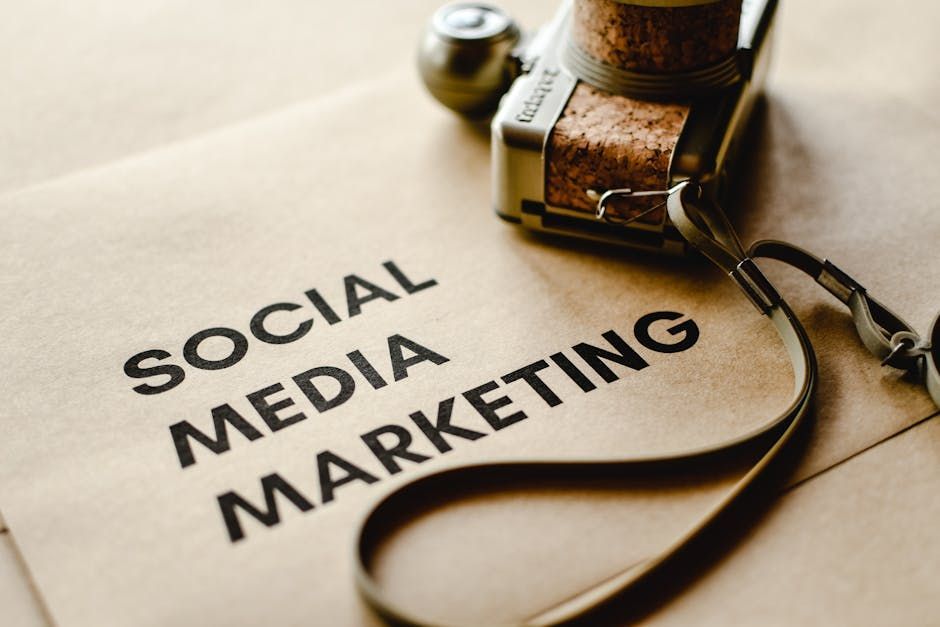
Social media marketing has transformed from an optional marketing channel to an essential business tool for St. Louis companies looking to connect with customers, build brand awareness, and drive sales. From Forest Park festivals to Cardinals game celebrations, social media platforms provide unparalleled opportunities to showcase your business personality while engaging with local communities in meaningful, authentic ways.
The power of social media extends far beyond simple post promotion. Today's successful St. Louis businesses use strategic social media approaches to build customer relationships, provide exceptional customer service, and create lasting brand loyalty. With over 4.8 billion social media users worldwide and 72% of adults using at least one social platform, businesses that ignore social media miss significant opportunities to reach potential customers where they already spend their time.
Understanding how to leverage social media effectively can transform your local business from a hidden gem into a community favorite that customers actively recommend to friends and family. Whether you're a restaurant in The Hill, a boutique in Clayton, or a service provider in Chesterfield, strategic social media marketing helps you build the relationships that drive sustainable business growth.
1. Platform Selection and Audience Targeting
Choosing the right social media platforms starts with understanding where your target customers spend their time and how they prefer to discover and interact with businesses. Different platforms serve different demographics and purposes, making strategic platform selection crucial for maximizing return on marketing investment. St. Louis businesses benefit from focusing their efforts on platforms where their ideal customers are most active rather than trying to maintain presence across every available platform.
Facebook remains the dominant platform for local business marketing, with particularly strong engagement among adults aged 25-54 who represent primary decision-makers for many purchases. The platform's robust local advertising capabilities, business page features, and community group integration make it ideal for St. Louis businesses looking to build local awareness and customer relationships. Facebook's event promotion tools are especially valuable for businesses hosting workshops, sales, or community events.
Instagram appeals to younger demographics and visual-focused businesses, making it perfect for restaurants, retailers, and service providers with photogenic offerings. The platform's Stories feature allows businesses to share behind-the-scenes content, showcase daily specials, and create authentic connections with followers. Instagram's shopping integration enables direct sales through the platform, making it increasingly valuable for e-commerce businesses serving the St. Louis market.

LinkedIn serves B2B companies and professional service providers, offering networking opportunities and thought leadership positioning that can be particularly valuable for businesses targeting other companies in the St. Louis metropolitan area. The platform's local business features and industry-specific groups provide opportunities to connect with potential partners, clients, and referral sources within specific geographic and professional communities.
2. Content Strategy and Local Engagement
Successful social media content balances promotional messages with valuable, entertaining, and educational content that followers genuinely want to see and share. The 80/20 rule suggests that 80% of content should provide value without direct promotion, while 20% can focus on products, services, and sales messages. This approach builds audience trust and engagement while avoiding the aggressive sales tactics that cause followers to unfollow or ignore business accounts.
Local content strategy leverages St. Louis culture, events, and community connections to create authentic engagement with area customers. This includes sharing content about local events, partnering with other St. Louis businesses, highlighting customer stories from the area, and incorporating local landmarks, traditions, and seasonal activities into your content calendar. Local content helps establish your business as an integral part of the community while providing relatable talking points for followers.
Behind-the-scenes content humanizes your business by showing the people, processes, and personalities that make your company unique. This might include employee spotlights, workspace tours, product creation processes, or day-in-the-life content that helps customers connect with your brand on a personal level. St. Louis businesses can leverage the city's friendly, approachable culture to create warm, inviting content that reflects local values and relationship-focused business approaches.
User-generated content encourages customers to share their experiences with your business, creating authentic testimonials while expanding your reach through their personal networks. This includes customer photos, reviews, testimonials, and social media mentions that can be shared across your platforms. Encouraging user-generated content through contests, hashtag campaigns, or simple requests helps build community around your brand while providing fresh content for your social media accounts.
3. Visual Branding and Photography
Consistent visual branding across social media platforms creates professional, recognizable presence that builds trust and brand awareness over time. This includes using consistent colors, fonts, logo placement, and design styles that reflect your brand personality while remaining easily recognizable across different platforms and content types. Professional visual branding helps small businesses compete with larger companies by projecting polish and reliability.
High-quality photography significantly impacts engagement rates and customer perception, with visual content receiving 94% more views than text-only posts. St. Louis businesses can leverage the city's beautiful architecture, parks, and neighborhoods as backdrops for product photography, creating unique visual content that showcases local pride while highlighting products or services. Investment in professional photography or smartphone photography training can dramatically improve social media effectiveness.
Platform-specific image optimization ensures that visual content displays properly across different social media platforms, each of which has unique size requirements and display formats. This includes creating multiple versions of images for Facebook posts, Instagram Stories, LinkedIn articles, and other platform-specific formats. Proper optimization prevents cropping issues and ensures that visual content makes maximum impact across all chosen platforms.

Video content generates higher engagement rates than static images, with live video content performing particularly well for local businesses. This includes product demonstrations, behind-the-scenes tours, customer testimonials, and live Q&A sessions that provide immediate value while building personal connections with audiences. Video content doesn't require expensive production; authentic, helpful videos often outperform highly produced content that feels less genuine.
4. Community Building and Customer Service
Social media customer service provides immediate response opportunities that can turn frustrated customers into loyal advocates while demonstrating your commitment to customer satisfaction publicly. Responding quickly and professionally to comments, questions, and concerns shows potential customers that you value communication and stand behind your products or services. This public customer service becomes a marketing tool that builds trust with potential customers who see how you treat existing ones.
Community building strategies focus on creating ongoing conversations and relationships rather than one-way promotional broadcasting. This includes asking questions, responding to comments, sharing community news, and creating content that encourages discussion and interaction. St. Louis businesses can build community by celebrating local events, supporting local causes, and creating content that brings area residents together around shared interests and values.
Engagement monitoring ensures that you respond appropriately to all interactions while identifying opportunities for improved customer experience and relationship building. This includes monitoring mentions of your business name, relevant keywords, and competitor activity to stay informed about community conversations and reputation management opportunities. Consistent engagement monitoring helps prevent small issues from becoming major problems while identifying satisfied customers who might provide testimonials or referrals.
Crisis management preparation includes having clear protocols for handling negative feedback, customer complaints, or social media controversies that could impact your business reputation. This includes knowing when to respond publicly versus privately, how to de-escalate situations professionally, and when to seek additional support from social media management professionals. Effective crisis management can actually strengthen customer relationships by demonstrating transparency and commitment to resolution.
5. Paid Social Media Advertising
Paid social media advertising extends your reach beyond organic followers to target specific demographics, interests, and geographic locations that match your ideal customer profile. Social media advertising platforms provide sophisticated targeting options that allow St. Louis businesses to reach potential customers within specific neighborhoods, age ranges, income levels, and interest categories. This precision targeting makes social media advertising more cost-effective than traditional advertising methods for many local businesses.
Local advertising features help businesses target customers within specific geographic areas, making them ideal for St. Louis companies serving local or regional markets. This includes radius targeting around your business location, targeting specific zip codes or neighborhoods, and using location-based interests to reach people who frequent areas where your customers might be found. Local targeting ensures that advertising budgets focus on reaching people who can actually visit your business or use your services.
Ad format optimization involves choosing the right advertising formats for your goals and audience preferences. This includes image ads, video ads, carousel ads showcasing multiple products, and story ads that appear between user-generated content. Different ad formats work better for different objectives, such as brand awareness, website traffic, lead generation, or direct sales. Testing different formats helps identify what resonates best with your specific audience.

Budget management and performance tracking ensure that advertising investments generate positive returns while providing data for ongoing optimization. This includes setting appropriate daily or lifetime budgets, monitoring cost-per-click and cost-per-conversion metrics, and adjusting targeting or creative elements based on performance data. Regular performance analysis helps identify successful strategies that can be scaled up and unsuccessful approaches that should be modified or discontinued.
6. Analytics and Performance Measurement
Social media analytics provide insights into audience behavior, content performance, and overall marketing effectiveness that guide strategic decision-making and budget allocation. Key metrics include reach, engagement, click-through rates, conversion rates, and follower growth, each providing different insights into how social media efforts contribute to business goals. Regular analytics review helps identify successful strategies that should be expanded and areas needing improvement or adjustment.
Audience insights reveal demographic information, interests, and behaviors of your social media followers, helping you create more targeted content and advertising campaigns. This includes understanding when your audience is most active, what types of content generate the most engagement, and how your audience compares to your overall customer base. Audience insights help ensure that social media strategies align with actual customer preferences rather than assumptions about what might work.
Content performance analysis identifies which posts, topics, and formats generate the highest engagement, reach, and conversion rates. This data guides future content creation by highlighting successful themes, optimal posting times, and effective call-to-action strategies. Content analysis also reveals opportunities for repurposing successful content in different formats or updating older content that continues to perform well.
ROI measurement connects social media activities to actual business results such as website traffic, lead generation, sales, and customer acquisition costs. This includes tracking conversions from social media campaigns, measuring the lifetime value of customers acquired through social platforms, and calculating the cost-effectiveness of social media marketing compared to other marketing channels. Clear ROI measurement justifies social media investments while identifying opportunities for improved efficiency.
7. Seasonal and Event-Based Marketing
Seasonal marketing leverages holidays, weather changes, and annual events to create timely, relevant content that resonates with customer needs and interests. St. Louis businesses can capitalize on seasonal opportunities such as baseball season, fall festivals, winter activities, and spring events that create natural conversation topics and promotional opportunities. Seasonal content feels organic and relatable while providing regular content creation inspiration throughout the year.
Local event marketing involves participating in or promoting St. Louis area events, festivals, and community activities that align with your brand values and target audience interests. This includes sharing content about events you're attending, sponsoring community activities, or simply highlighting local events that your customers might enjoy. Event-based marketing demonstrates community involvement while providing valuable information that positions your business as a helpful local resource.
Holiday campaigns can drive sales while building emotional connections with customers through relevant, timely messaging. This includes major holidays like Christmas and Independence Day, local celebrations like Mardi Gras or Oktoberfest, and industry-specific holidays relevant to your business. Holiday campaigns should balance promotional content with genuine celebration and community spirit that reflects authentic business personality.
Real-time marketing opportunities arise from trending topics, breaking news, or spontaneous events that provide timely content creation opportunities. This includes weather events, sports victories, community celebrations, or viral trends that can be incorporated into business content appropriately. Real-time marketing requires careful judgment to ensure that content remains professional and on-brand while capitalizing on timely conversation opportunities.
8. Influencer Partnerships and Collaborations
Local influencer partnerships provide authentic endorsements from trusted community members who can introduce your business to new audiences through personal recommendations. St. Louis area influencers include food bloggers, lifestyle personalities, business leaders, and community advocates who have established followings among demographics that might align with your target customers. Influencer partnerships can be particularly effective for local businesses because they leverage existing trust and community connections.
Micro-influencer collaborations often provide better ROI than partnerships with larger influencers because micro-influencers typically have higher engagement rates and more targeted, local audiences. Micro-influencers might include local food enthusiasts, neighborhood advocates, or industry professionals who have smaller but highly engaged followings. These partnerships can be more affordable while providing authentic endorsements from people who are genuinely connected to the local community.
Business-to-business influencer partnerships involve collaborating with other St. Louis businesses, community organizations, or professional associations to cross-promote services and expand reach within target demographics. This might include partnering with complementary businesses, supporting local nonprofits, or participating in business association activities that provide networking and promotional opportunities. B2B collaborations can provide mutual benefits while strengthening community business relationships.
Content collaboration opportunities include partnering with influencers or other businesses to create valuable content such as tutorials, guides, event coverage, or educational resources that provide genuine value to audiences. Collaborative content often performs better than purely promotional material because it offers multiple perspectives and broader expertise while expanding reach through partner networks. Successful collaborations focus on providing value rather than direct promotion.
Conclusion
Social media marketing success requires consistent effort, authentic engagement, and strategic planning that aligns with overall business goals and customer needs. St. Louis businesses that implement comprehensive social media strategies position themselves for sustained growth while building stronger community connections and customer relationships. From platform selection to performance measurement, each element of social media marketing contributes to overall business success and brand development.
Professional social media management delivers measurable results through increased brand awareness, customer engagement, and sales conversion while freeing business owners to focus on core operations and customer service. Whether you're developing your first social media presence or optimizing existing accounts, partnering with experienced professionals ensures that social media investments generate positive returns while maintaining authentic brand personality and community connections.
At Yeppy Marketing Agency, we help St. Louis businesses create effective social media strategies that drive engagement, build customer loyalty, and generate measurable business results. Our local expertise and understanding of St. Louis culture helps businesses connect authentically with area customers while implementing proven strategies that support long-term growth and success.
Ready to transform your social media presence into a powerful business growth tool? Contact our team today to discuss how we can help your St. Louis business succeed through strategic social media marketing that builds relationships, drives engagement, and generates real results for your bottom line.


